How many countries can you name that end in the letter “A”? No unorganized or disputed territories like Antarctica or Western Sahara. And you can’t name areas that are part of another country, like French Guiana or American Samoa. Only independent countries. Before you read any further, see how many of these countries you can name. Now read on to find out which ones you missed and learn a few facts along the way.
Why Do So Many Countries End in A?
The suffix “-ia” comes from Latin and means “land of.” So “India” means “land of the Indus River,” “Russia” means “land of the Rus people,” and “Australia” means “land of the south.” During the era of European exploration from the 15th-18th centuries, Latin was the language of academia and diplomacy. So, explorers tended to name new (to them) lands with an “-a” or “-ia” ending. Note that in most cases the names of countries are different in the local languages than the names given to them in English. For example, in local languages India is Bharat, Croatia is Hrvatska, Mongolia is Monggol Uls, and China is Zhōngguó. Read on to discover the countries that end in A (in English).
1. Albania
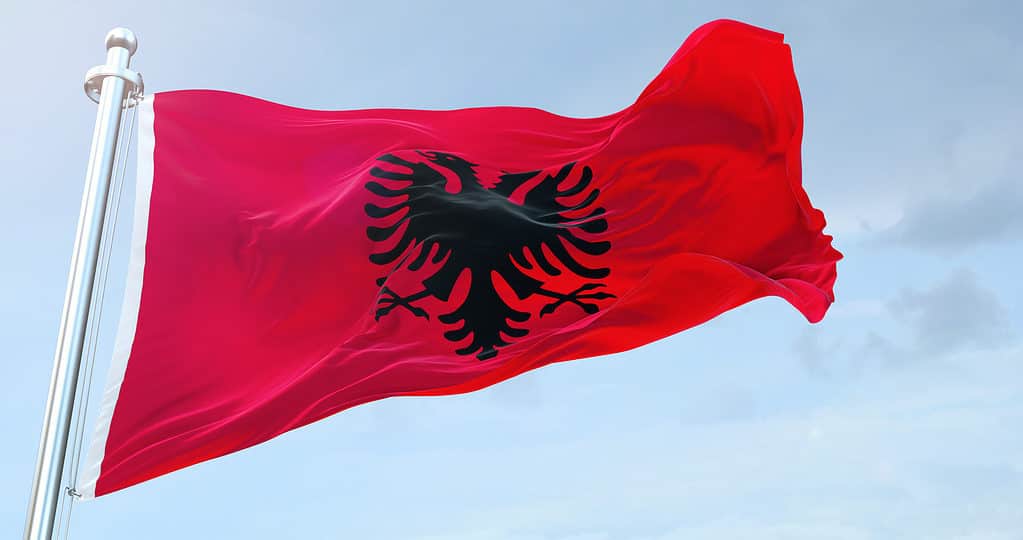
No one can deny Albania has one of the coolest, toughest-looking flags in Europe.
©iStock.com/EA
The first of the countries that end in A is Albania. It is a small country in the Balkans bordering Greece to the south and several countries of the former Yugoslavia to the north and east. It has a blood-red flag with a black dragon in the center. The Albanian language is unique in Europe as an “isolate” language similar to no other Indo-European language.
2. Algeria
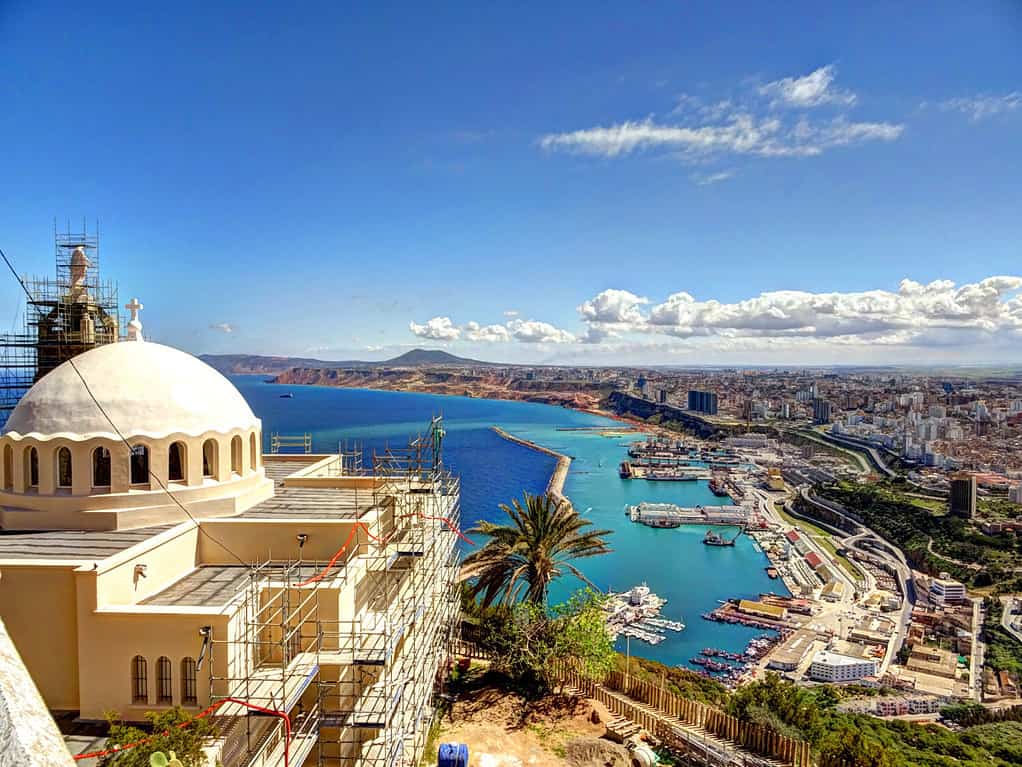
Oran, Algeria shows the appeal of this African country as a vacation destination.
©mehdi33300/Shutterstock.com
Algeria is the biggest country in Africa and the 10th-biggest in the world. It’s about the same land area as Alaska and Texas combined. Its Mediterranean coastline is where most of the population lives, while nomadic people groups migrate through the vast Sahara to the south. Algeria was a French colony for 132 years.
3. Andorra
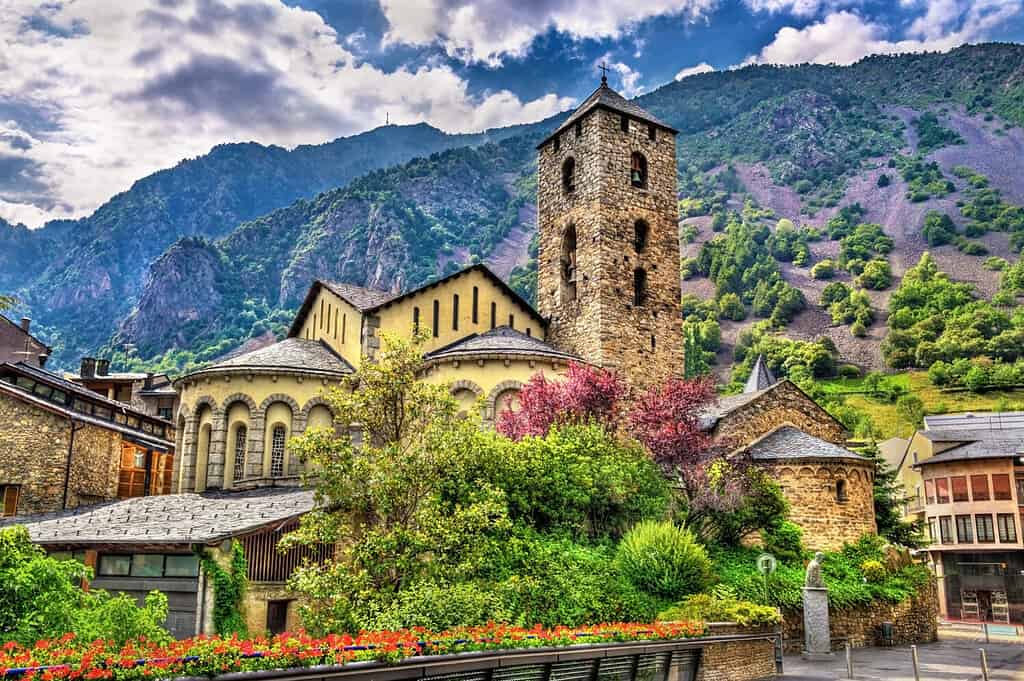
Andorra has fairytale-like scenery.
©Leonid Andronov/Shutterstock.com
One of the smallest countries in the world is Andorra. It is nestled in the Pyrenees Mountains between France and Spain and has strong cultural influences from both countries. It is popular with tourists for tax-free shopping and has over 2,000 stores in its tiny land area.
4. Angola
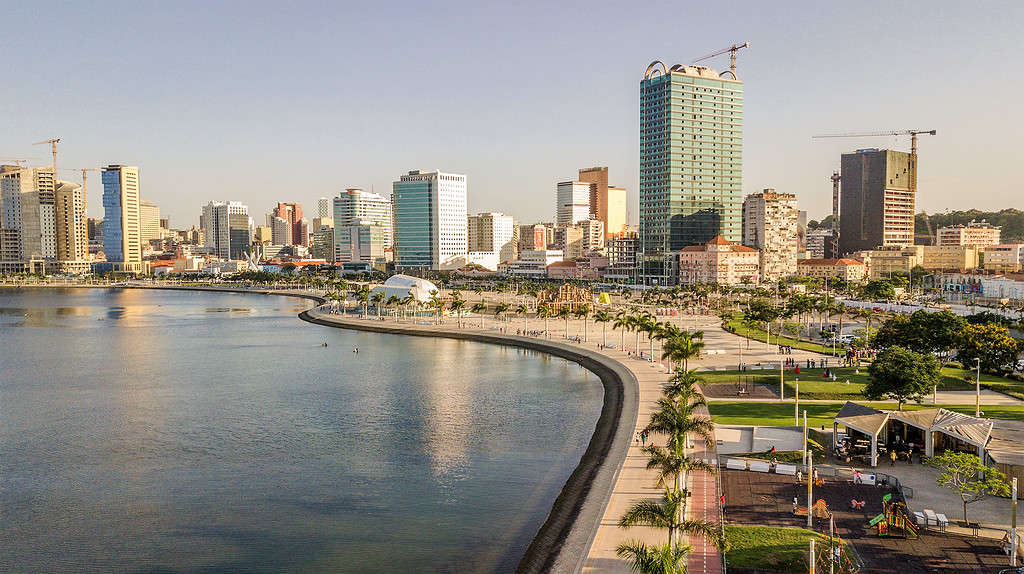
Luanda, the capital, is located on the coast of Angola. It is a burgeoning, modern city.
©claudio gomes/ via Getty Images
Angola, a former Portuguese colony, achieved its independence in 1975. After a power struggle, a Marxist government came into authority. With changes of government in Angola and South Africa and the collapse of global communism, the political situation in this part of Africa has stabilized greatly.
5. Antigua and Barbuda
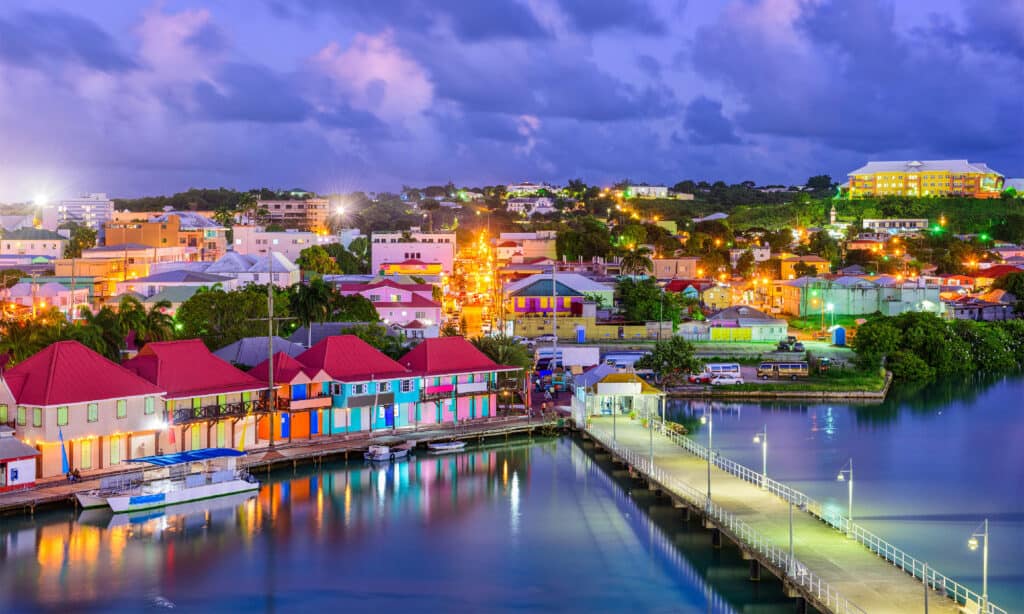
©iStock.com/SeanPavonePhoto
Antigua and Barbuda are two islands that together with some smaller islands make up one country. They are located in the Windward Islands where the Caribbean Sea meets the Atlantic Ocean. This is one of the more prosperous countries of the Caribbean, attracting tourists for its coral reefs, beaches, and rainforests.
6. Argentina

Ushuaia is the capital of Tierra del Fuego province in Argentina.
©saiko3p/iStock via Getty Images
Argentina is one of the largest countries in South America. Along with Chile, it takes up most of the southern portion of the continent. The climate ranges from tropical forests in the north, temperate grasslands in the middle portion, and sub-arctic conditions in the southernmost part of the country. Argentina is a major agricultural country, particularly noted for its beef production.
7. Armenia

Mountain Ararat is located across the border in Turkey, but it is well within sight of the capital, Yerevan.
©iStock.com/marlenka
Armenia is a country with ancient historical roots. Mt. Ararat, within sight of the national capital, is the legendary site where Noah’s Ark was said to have come to rest at the end of the biblical Great Flood. Armenia was also the first country in the world to accept Christianity as its state religion in the year 301. In modern times, Armenia declared its independence from the Soviet Union in 1991 and is moving toward greater integration with Europe.
8. Aruba

It doesn’t rain much in Oranjestad, capital of Aruba in the Caribbean.
©Wirestock/iStock via Getty Images
8th on our list of countries that end in A is Aruba. It is an island nation in the Caribbean that is immensely popular with tourists for its beautiful beaches and colorful fairytale-like architecture. Although it rains more in the spring, it doesn’t rain much, and the temperatures are so nice (79-89℉) that it’s still considered the best time of year to go.
9. Australia

Most of Australia’s population lives along the coastline.
©Greg Brave/Shutterstock.com
Australia is the only country that is also a continent. About 80% of the population of Australia lives close to the ocean, so sports like swimming, diving, snorkeling, and surfing are immensely popular. Australia, of course, is best known for its unique wildlife such as kangaroos, koalas, and kookaburras. Australian people have a reputation internationally for kindness, fun, and sincere friendliness.
10. Austria

Located in the Alps, Austria is a favorite destination for many.
©Nok Lek Travel Lifestyle/Shutterstock.com
Austria is a central European country that has played a large role in European history, most notably as the center of the Austro-Hungarian Empire. The capital, Vienna, has been a center of art, music, and philosophy for hundreds of years and is still considered one of the great European capitals. Austria is located in the Alps, making it a favored destination for winter sports.
11. Bermuda

Bermuda is famous for its pink coral beaches.
©Yingna Cai/Shutterstock.com
Even though it has the feel of a Caribbean island, Bermuda is far away in the Atlantic, about 600 miles off the coast of North Carolina. The jet stream brings warm Caribbean air and water to the island, so it enjoys mild temperatures despite its northern location. One of Bermuda’s attractions is its pink sand beaches made of tiny coral fragments.
12. Bolivia
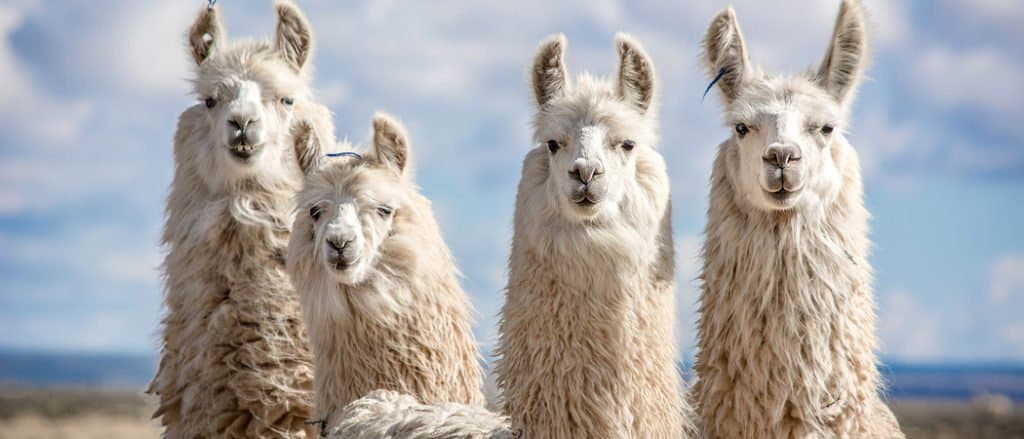
Alpacas have been useful in Bolivia for millennia. They provide food, clothing, and transport of goods.
©Noe Besso/Shutterstock.com
The namesake of the country is Simon Bolivar, a South American revolutionary leader who helped multiple South American countries achieve independence from Spanish colonial rule in the 18th century. Bolivia originally had a coastline on the Pacific but lost it to Chile during a war. Bolivia is noted for the interesting cultures of its indigenous people groups.
13. Bosnia and Herzegovina
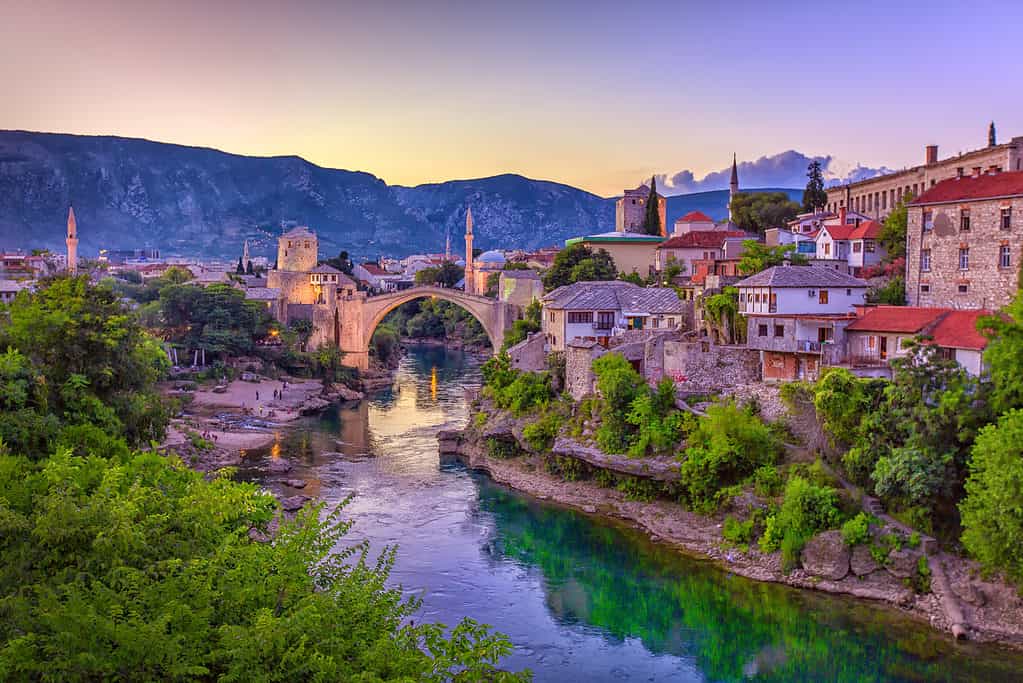
The Mostar bridge in Bosnia and Herzegovina is a UNESCO World Heritage Site.
©iStock.com/Greg Sullavan
Bosnia and Herzegovina is a country in the Balkans of southeastern Europe. It is a region that was contested for centuries between the Austro-Hungarian and Ottoman Empires. As a result, the culture is a mixture of cultures and religions: Catholic Croatians, Orthodox Serbs, and Muslim Bosnians. These groups fought a brutal civil war from 1992-1995, but the country managed to hold together with shared power between the different ethnic factions.
14. Botswana
Botswana, a country in Southern Africa, is one of the most sparsely populated areas on earth. The Kalahari Desert and other wilderness areas cover most of the territory. Botswana has the longest-running uninterrupted democratic government on the continent. Wildlife- and mineral-rich, it is a development success story. Today it is considered an upper-middle-income country with a similar standard of living as China or Brazil.
15. Bulgaria
Bulgaria is located in the Balkans on the Black Sea and bordering Turkey to the southeast. The Bulgarian language is quite similar to Russia and the two countries have had close relations in the past. Following the collapse of communism in the 1990s, however, Bulgaria joined the European Union and NATO and is integrating closely with Western Europe.
16. Cambodia
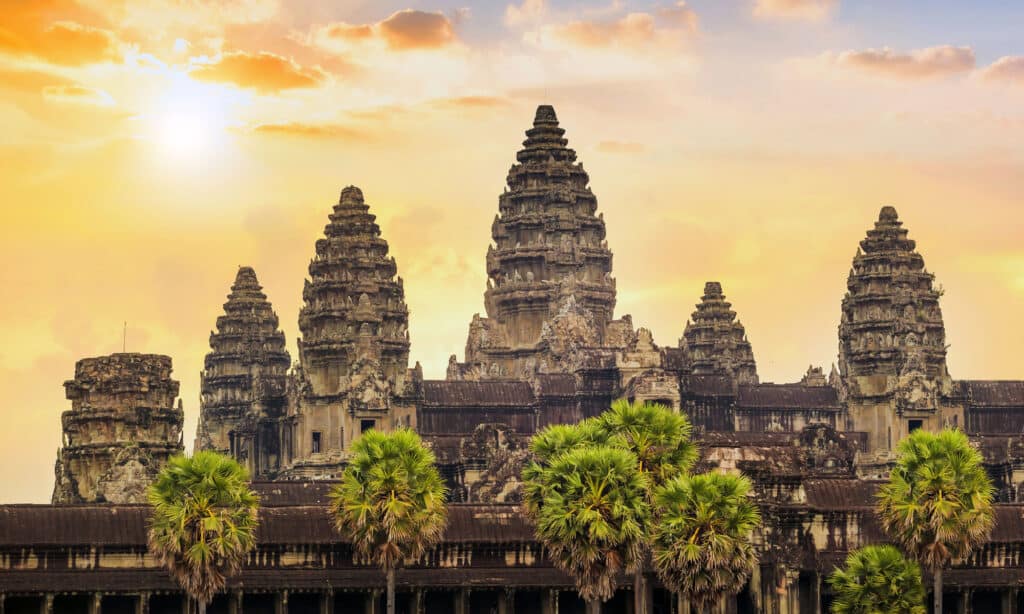
Angkor Wat is an internationally famous cultural monument in Cambodia.
©iStock.com/f11photo
Cambodia is most famous for Angkor Wat, an ancient religious site that includes the longest-functioning Hindu shrine in the world. This site is so famous it is featured on the Cambodian flag. Cambodia is also known for its lush tropical forests, beautiful beaches, friendly people, and delicious food.
17. Canada
Canada is the world’s second-largest country by land area, after Russia. It was formed from several British colonies in 1867. Most of Canada’s population lives in the southern part of the country, leaving a vast interior of forests, rivers, lakes, and mineral wealth in the frigid north. Canada has inclusive policies to keep the English, French, and First Nations cultures united and working together to lead the country.
18. China (People’s Republic of)
The People’s Republic of China is the formal name for mainland China. With 1.425 billion people, it was the world’s most populous country until India passed it in 2023. China is widely seen in the world as a rising superpower that is replacing Russia as a rival to the United States. China today has a high development level but there are still great gaps between the affluence of urban people and poverty in rural villages.
19. China (Republic of)
The Republic of China is the official name of Taiwan. Taiwan is in an ambiguous place in world affairs. Officially, it is part of China. When communists took over the mainland, the previous Chinese authorities and remaining military forces went to the island of Taiwan. Although it is not recognized as a separate country, the United States and other Western powers have invested heavily in its economy and defense to prevent it from being absorbed by the mainland Chinese government.
20. Colombia
Colombia is the first South American country you would reach if you were traveling overland from North to South America. It is world-famous for its coffee. It has a varied landscape, with beaches on the Caribbean Sea and Pacific Ocean, the Andes Mountains, and a part of the Amazon jungle to the southeast.
21. Costa Rica
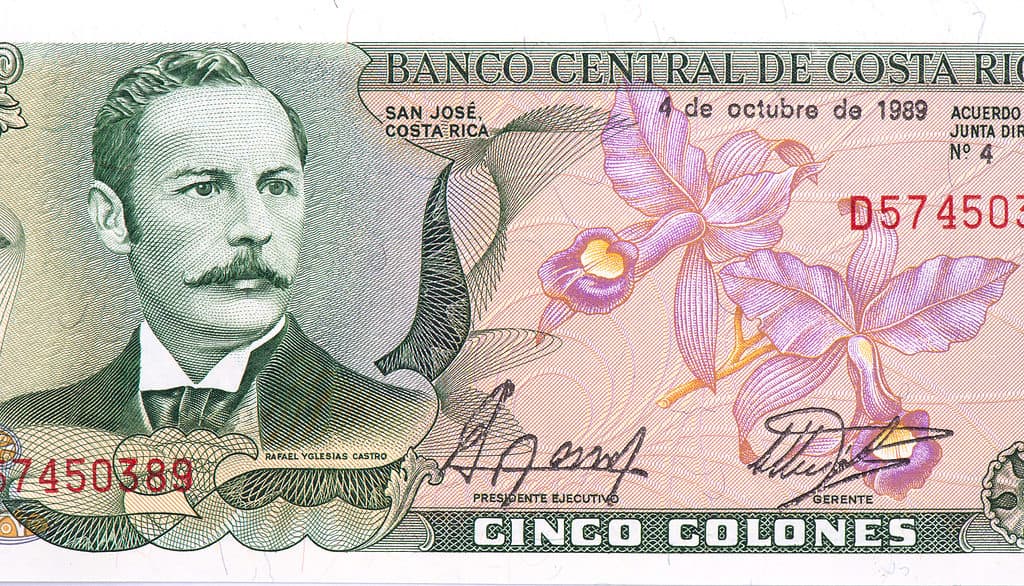
The state flower of Costa Rica is the guaria morada.
©Prachaya Roekdeethaweesab/Shutterstock.com
Costa Rica is a Central American country located between Nicaragua and Panama. It is a peaceful, stable country that has been called the “Switzerland of Central America.” It has lush rainforests with unique plant and animal species that attract researchers and tourists from around the world.
22. Croatia
Croatia is one of the countries of the former Yugoslavia. It includes most of that country’s coastline and islands on the Adriatic Sea, an area that in ancient times was known as the Dalmatian coast. Although people of Croatian and Serbian backgrounds speak a nearly identical language, they use different alphabets for it.
23. Cuba

Classic cars are a popular and unique tourist attraction in Havana.
©Suzanne Tenuto/Shutterstock.com
Cuba is an island that lies just 90 miles off the southern coast of Florida. The United States helped Cuba get independence, but the country eventually had a Marxist revolution. It aligned with the Soviet Union and was nearly the catalyst for World War III in the Cuban Missile Crisis. Because the country has been under economic sanctions for so long, it has had to keep and maintain old cars for decades. This means taxis in Havana are now classics, and this is one of the main tourist attractions in the country as it slowly reopens to the world.
24. Dominica
Dominica is a Caribbean island country that is considered one of the ecologically richest islands in the region. Among the rare and beautiful species found in Dominica is the fantastic purple-and-green sisserou parrot, proudly depicted on the national flag.
25. Equatorial Guinea
Formerly known as Spanish Guinea, Equatorial Guinea gained its independence from Spain in 1968. it is the only Spanish-speaking country in Africa. The natural environment is all African, though, complete with African lowland gorillas, forest elephants, and leopards that roam into city suburbs.
26. Eritrea
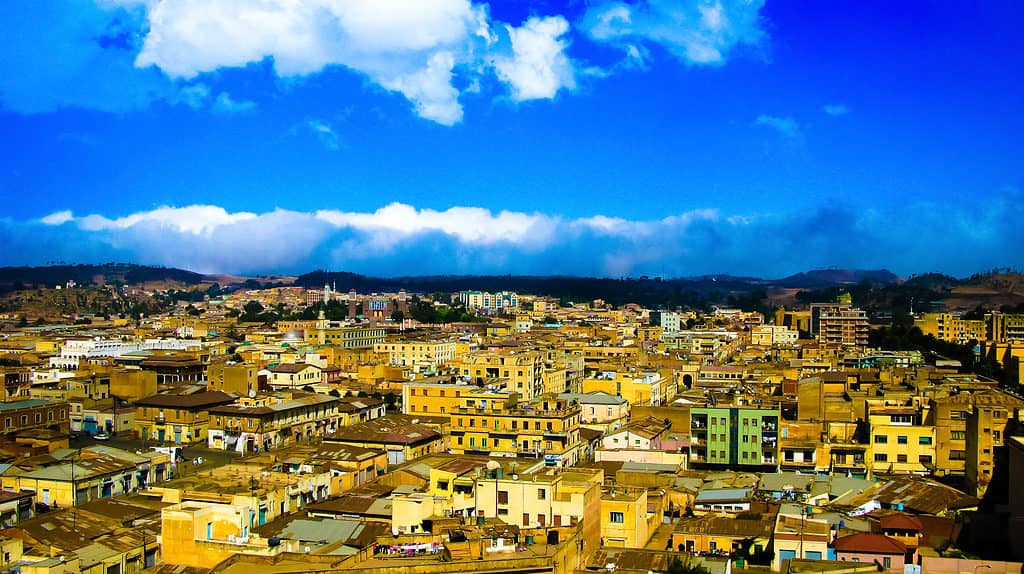
Asmara is the capital of Eritrea.
©Homo Cosmicos/Shutterstock.com
Paradoxically, Eritrea is both an ancient country and one of the newest ones in the world. It’s not far from the presumed birthplace of humanity in East Africa, but achieved independence from Ethiopia only in 1991, after a 30-year civil war. After so many years of conflict, Eritrea struggles today to deal with problems of poverty and violence.
27. Estonia

Tallinn, the capital of Estonia, has fairytale architecture that reflects its Scandinavian culture.
©Oleksiy Mark/Shutterstock.com
Estonia is a small country located near Finland and bordering Russia and Latvia. It is one of three Baltic States that were occupied by the Soviet Union at the end of World War II until the collapse of communism in 1991. Estonia today is integrated into Western security and economic structures, including NATO and the EU.
28. Ethiopia

Addis Ababa is the rapidly modernizing capital of Ethiopia.
©Eric Isselee/Shutterstock.com
Ethiopia is the world’s most populated landlocked country in the world, with over 116.5 million people. It is located in the Horn of Africa, a region that has been torn by war and famine perhaps as long as human beings have existed. Despite ongoing conflicts, in the past two decades, Ethiopia has had record economic growth and is rapidly becoming a center of light industry in Africa.
29. Gambia
The Gambia is both a country and a river. Officially known as The Republic of The Gambia, it is one of the few countries using the article “the” in English. Other examples are The Philippines and the United Kingdom. The country lies on both banks of the lower part of the Gambia River and is surrounded on three sides by Senegal.
30. Georgia
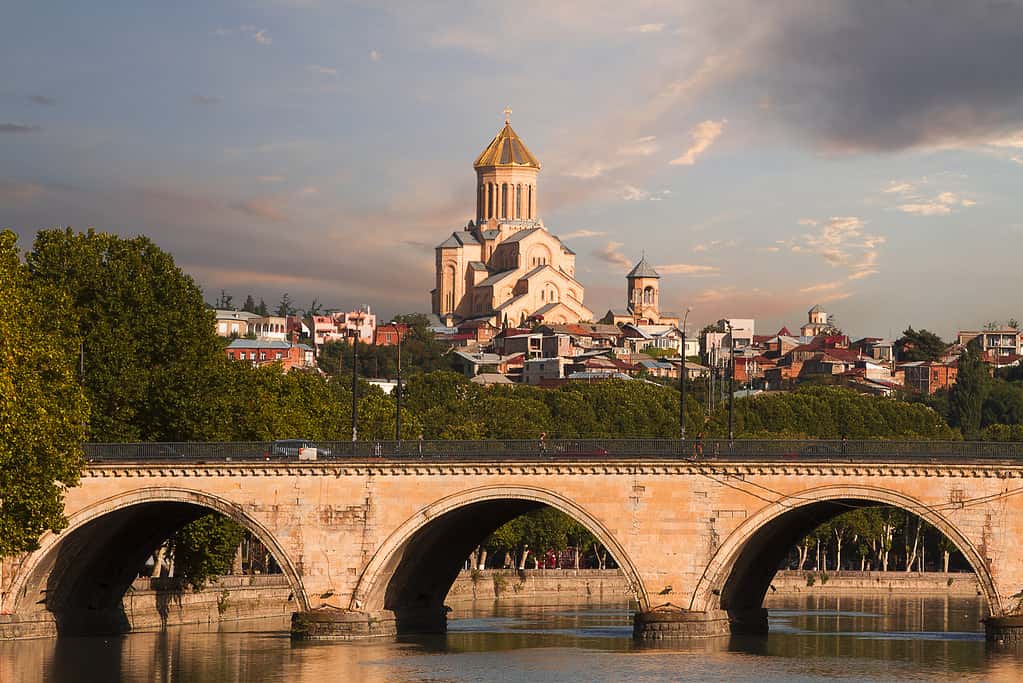
Saarbrucken Bridge over the River Mtkvari in Tbilisi, Georgia.
©Ozbalci/iStock via Getty Images
Long before Georgia was a state in the American South, it was a country in the mountainous Caucasus region between Russia and Turkey. Historians think Georgia may have been the birthplace of wine. The Georgian language has a unique alphabet and is one of the most difficult languages in the world.
31. Ghana
Ghana, West Africa, was a wealthy kingdom in ancient times. Later colonized by the British Empire, it was one of the first African countries to achieve independence in the decolonization movement after World War II. Southern Ghana is more tropical and well-watered while the north is more arid.
32. Grenada
Grenada is a Caribbean Island nation that hit international headlines in 1983 when the United States invaded it to expel a Marxist government. Since then, it has reemerged as a tourist haven.

St. George’s is the capital of the Caribbean island of Grenada.
©Andreas Voelkel/iStock via Getty Images
33. Guatemala

The historic neighborhood of Antigua is a popular and scenic tourist area.
©SL-Photography/Shutterstock.com
The Central American country of Guatemala has a volcanic landscape with several still-active volcanoes. Coffee is one of the main exports of the country.
34. Guinea
The Republic of Guinea in West Africa is one of the poorest countries in the world. However, it also has rich deposits of diamonds, gold, and other precious metals and minerals. 25% of the world’s bauxite reserves are found there and are one of the country’s main exports.
35. Guyana
The South American country of Guyana is the only English-speaking country on the continent, a legacy of its British colonial past. Guyana has lush jungles and abundant rivers and waterfalls, creating an ideal habitat for plants and wildlife of all sorts.
36. India
India, or Bhārat, as it is known in Hindi, is the world’s most populated country, having surpassed China in 2023. It is a rapidly developing country noted for its movie industry, high technology, and emerging space program.
37. Indonesia
Indonesia is a remarkable country in Southeast Asia made up of over 17,000 islands. With a population of 279 million, it is the fourth most-populated country in the world. About half the population lives on the island of Java, but the country is making plans to relocate the capital to Borneo to draw population and development to this more central location.
38. Jamaica

Jamaica is world famous for its friendly people and chill lifestyle.
©Pixel Prose Images/Shutterstock.com
A former British colony in the Caribbean Sea, Jamaica is a popular vacation destination. It has had a great impact on the world culturally in cuisine, dance, and music. It enjoys a worldwide reputation as a laid-back, friendly place of “no worries.”
39. Kenya
The East African country of Kenya is a former British colony noted worldwide for its wildlife. It draws thousands of tourists a year for photo safaris. Kenya’s economy has been growing and diversifying in recent decades and it is rapidly rising as an economic leader in the region.
40. Latvia
Latvia, along with neighboring Lithuania and Estonia, is one of the Baltic States. These Germanic-Scandinavian countries border Russia and were occupied by the Soviet Union during and after World War II. They achieved independence with the collapse of communism in 1991.
41. Liberia
Liberia in West Africa has a unique history, having been founded by freed American slaves as a homeland for those who wished to move there. The capital of the country, Monrovia, was named after American President James Monroe.
42. Libya
Libya is a mainly desert country located on the Mediterranean coast between Egypt, Algeria, and Tunisia. Its fate has been tied to Europe since ancient times. It was one of the earliest parts of Africa added to the Ancient Roman Empire and a significant theater of war in World War II. More recently, the country has been fractured by the overthrow of longtime dictator Muammar Gaddafi.
43. Lithuania
Although a small country, Lithuania has played an important role in European affairs. In the medieval era, it grew into a substantial kingdom, united with Poland, covering territory from the Baltic Sea across a wide swath of western Russia and Ukraine. More recently, Lithuania achieved independence in 1991 from occupation by the Soviet Union and is now integrated into European economic and defense structures.
44. Malaysia
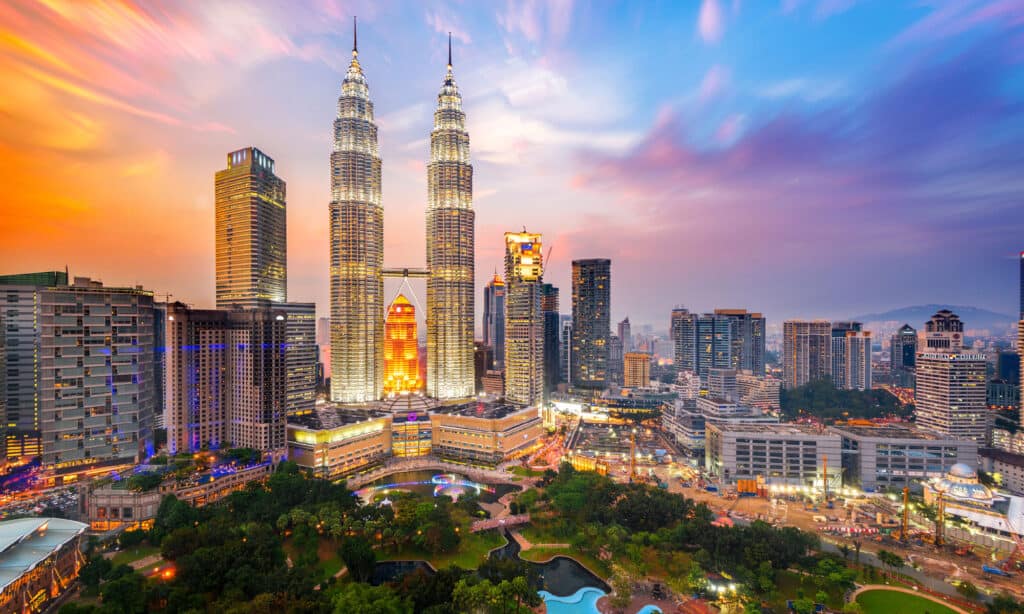
Malaysia’s Petronas Towers are two of the tallest skyscrapers in the world.
©iStock.com/Rat0007
Malaysia in Southeast Asia is divided into two main parts located on the Malay Peninsula and the island of Borneo. It has a strong developing economy and is the location of the Petronas Towers, two of the tallest buildings in the world.
45. Malta
Malta, an island nation in the Mediterranean is located at about the halfway point between Italy and Libya. Its strategic location has given it great importance from ancient times to the present. The island was honored by the British crown after World War II for exceptional bravery in its resistance to the Axis powers.
46. Mauritania
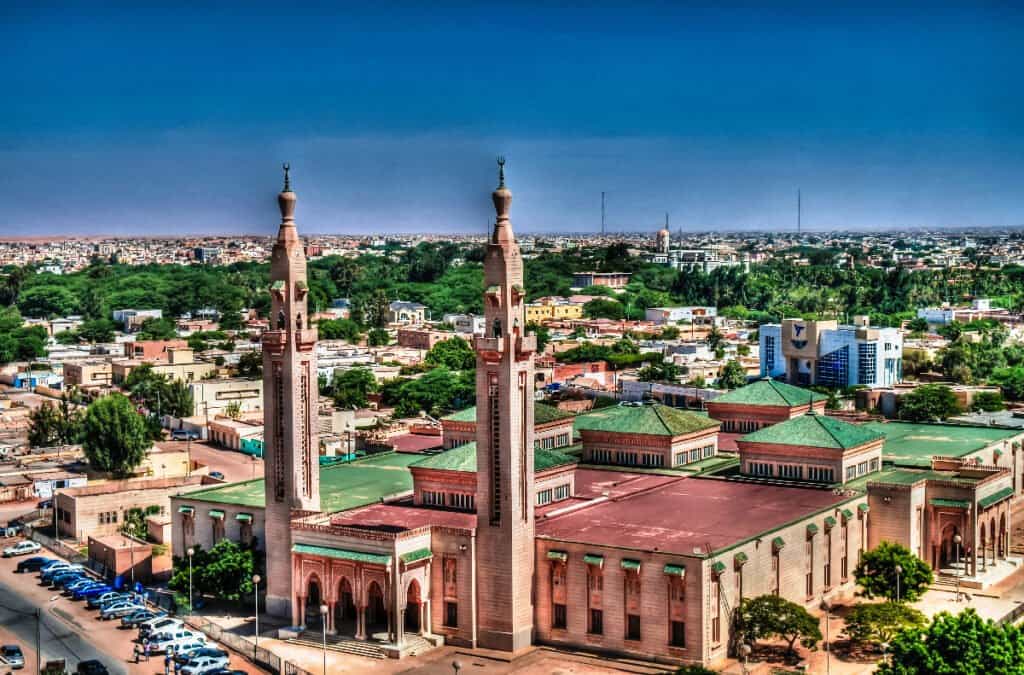
An Islamic country, Mauritania is heavily influenced by Arabic culture.
©Homo Cosmicos/Shutterstock.com
Mauritania, in West Africa, is a desert country south of Morocco, Western Sahara, and Algeria. Despite its location far from the Middle East, it is an Arabic-speaking country and is culturally part of the Arab world. It has a lot of natural resources but is underdevelopment and its economy depends on fishing and farming.
47. Mongolia
Historically Mongolia built the largest contiguous land empire the world has ever known, stretching from China and India across Russia and into Eastern Europe. Today, Mongolia is a thinly populated country of windswept steppes squeezed between Russia and China. About 30% of the country is part of the Gobi Desert ecosystem.
48. Namibia
Namibia in Southwest Africa is a mainly dry and arid country with large portions covered by the Kalahari Desert. Formerly ruled by Germany, Great Britain, and South Africa, Namibia achieved independence in 1990.
49. Nicaragua

Lake Managua is enormous enough to seem more like an inland sea than a lake.
©Elena Simona Craciun/Shutterstock.com
Nicaragua, a Central American country, has a couple of amazing natural features: Lake Managua and Lake Nicaragua. Despite being freshwater lakes, they have normally saltwater ocean species like sawfish, tarpon, and sharks. Nicaragua has been considered as a possible route for an alternative to the Panama Canal, but there are great concerns that this would damage the fragile ecology of the lakes.
50. Nigeria
With 230 million people, Nigeria is the most heavily populated country in Africa and sixth in the world in population. It has more than 250 ethnic groups and about 500 languages are spoken in the country. Nigeria has one of the strongest economies in Africa and is considered to be a rapidly developing country.
51. Panama
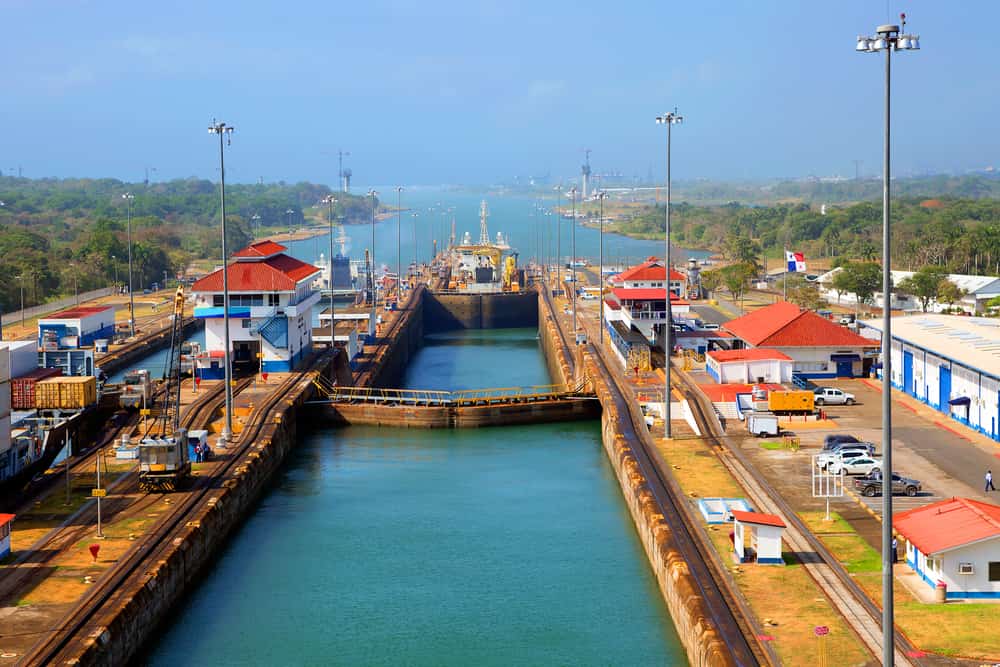
The Panama Canal moves ships through a series of locks.
©Galina Savina/Shutterstock.com
Panama is a Central American country at the narrowest point of the isthmus connecting North and South America. It’s most known worldwide as the location of the Panama Canal, a shipping link between the Atlantic and Pacific Oceans. Counterintuitively, the Canal is oriented in a way that ships actually have to navigate east to traverse the canal to the Pacific.
52. Papua New Guinea
Papua New Guinea is an independent country on the eastern half of the island of Irian Jaya, with the western half part of Indonesia. The landscape is mountainous and covered in tropical jungle. Because of the steep ridges separating mountain valleys, both wildlife and indigenous tribal cultures have developed in isolation from one another into a great diversity of forms.
53. Romania

Poenari Castle on Mount Cetatea, now in ruins, was the citadel where Vlad the Impaler lived.
©Arkadivna/iStock via Getty Images
Romania is located in southeastern Europe on the shores of the Black Sea. Fans of horror know it as the location of Transylvania, the legendary home of Count Dracula. The story was based on legends of Vlad the Impaler, a local warlord notorious for his sadistic torture of prisoners.
54. Rwanda
Rwanda is a landlocked country in East Africa bordering the Democratic Republic of the Congo, Burundi, Uganda, and Tanzania. The country is world-famous as the home of rare mountain gorillas.
55. St. Lucia
St. Lucia is a Caribbean Island country that is immensely popular with tourists today. In the days of colonialism, it changed hands several times between Britain and France. The cultural influences of both European powers blended with Afro-Caribbean elements, are still evident today.
56. Samoa
Samoa is a Polynesian country of four inhabited islands and several uninhabited ones. It is an independent country, not to be confused with American Samoa, which is a United States territory.
57. Saudi Arabia
Saudi Arabia plays an important role in world affairs because of its vast oil reserves and because it is the custodian of Mecca and Medina, two of the holiest sites of Islam. Every year millions of pilgrims visit Mecca in a custom known as the Hajj. Saudi Arabia spends billions of dollars on impressive infrastructure projects, including The Line, a planned futuristic, high-tech city.
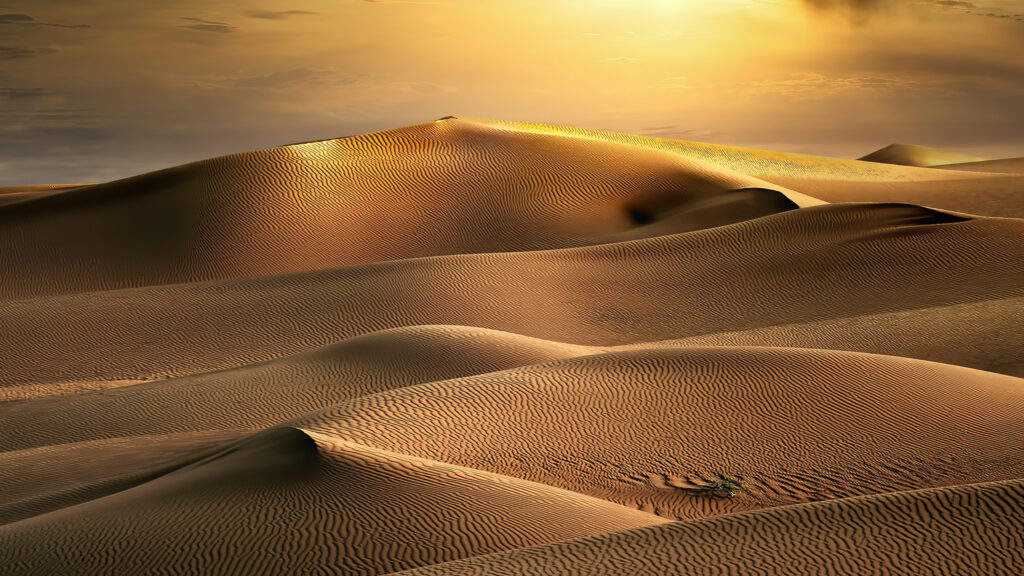
Saudi Arabia is known for its mesmerizing sand dune desert landscapes.
©iStock.com/AFZALKHAN M
58. Serbia
Serbia is a small Balkan country that has played an outsized role in history. A Serbian nationalist assassinated a member of the Austro-Hungarian royalty, setting off World War I. During the Yugoslavian civil war in the early 1990s, Serbia became an international pariah for human rights violations. Today, it is cautiously integrating into Western institutions, still mindful of its sovereignty and political differences with some of its neighbors.
59. Slovakia
Slovakia was formerly part of the Austro-Hungarian Empire but after World War I, it became part of the new country of Czechoslovakia. In 1993 it declared its independence and the country peacefully partitioned into the separate nations of the Czech Republic and Slovakia.
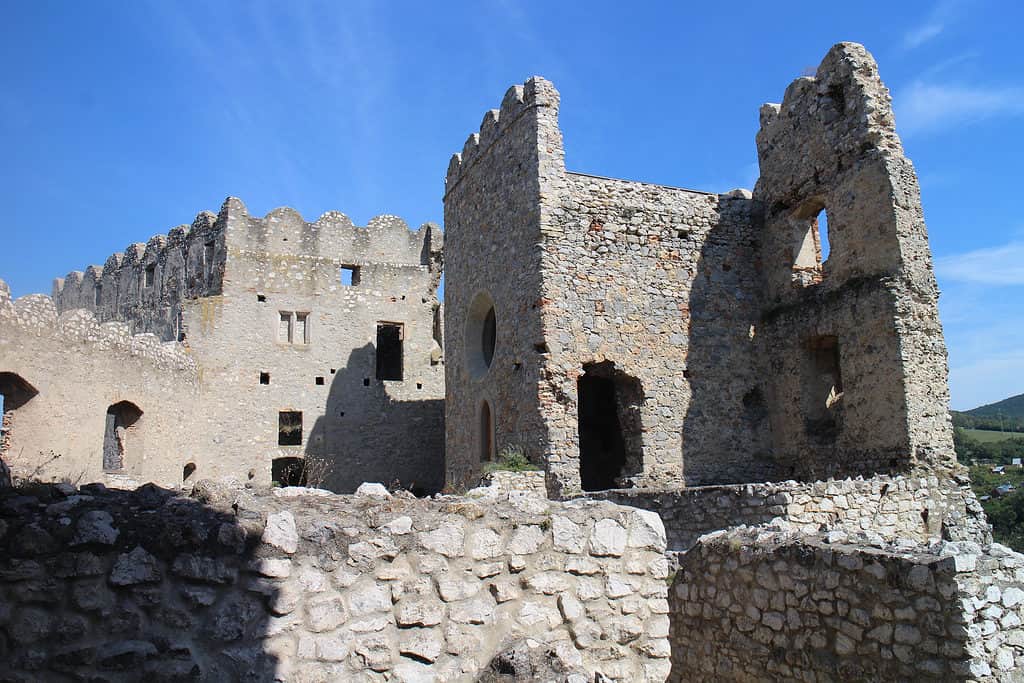
The first ancient habitation of Slovakia is thought to be dated at 270,000 BCE.
©P.Fabian/Shutterstock.com
60. Slovenia
Slovenia is a small mountainous country in south-central Europe. It is mainly landlocked but has a small coastline on the Adriatic Sea. Slovenia has changed hands many times over the centuries. It transferred from the Austro-Hungarian Empire to the new country of Yugoslavia after World War I. In 1991 Slovenia declared its independence and left the country after a brief armed conflict.
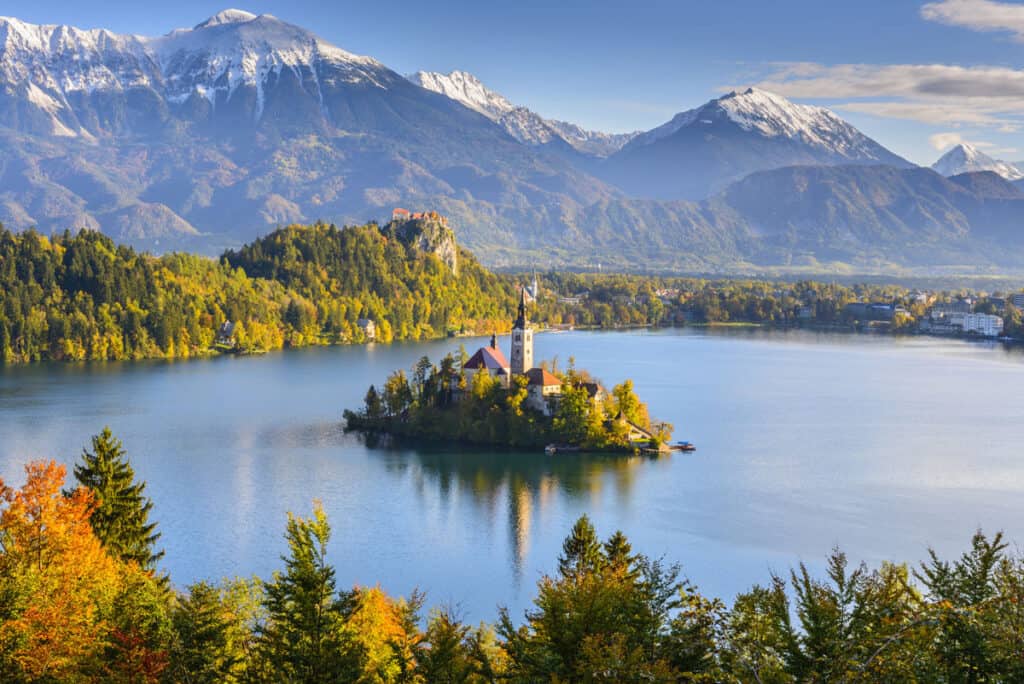
Slovenia has views that are straight out of a fairytale.
©iStock.com/AlbertoLoyo
61. Somalia
Somalia is a country on the horn of Africa bordering Kenya, Ethiopia, and Djibouti. Formerly divided between Italian and British areas of colonial rule, it is today one country, albeit one fractured by civil war. The Somali coast is notorious for modern-day pirates, kept in check by international navies.
62. South Africa
South Africa was once ostracized for its white supremacist policies but today is a majority-ruled democracy of 63 million people. Along with Brazil, Russia, India, and China, it’s referred to as one of the “BRICS,” a group of economically powerful developing nations.

Durban is a modern beachfront city in South Africa.
©Arnold.Petersen/Shutterstock.com
63. Sri Lanka
Sri Lanka is an island nation off the southeast coast of India. According to Hindu legend, it was once the home of a many-headed demon king who kidnapped Sita, the wife of Prince Rama. With help from Hanuman, the monkey god, Rama leads an army to retrieve his wife, who has proven her faithfulness to him.
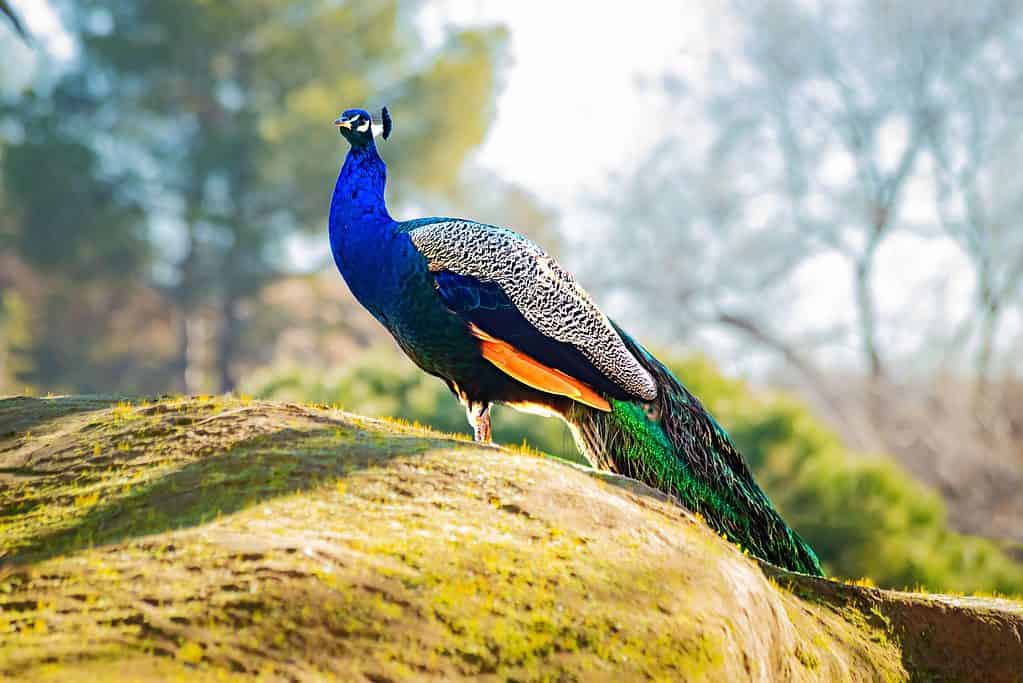
Peacocks are native to Sri Lanka’s jungles.
©Perpis/Shutterstock.com
64. Tonga
This Polynesian country is made up of 171 islands, only 45 of which are inhabited. Tonga claims an exclusive economic zone that gives them control over fishing and mineral rights. Depending on what resources are discovered and how they are managed, this can become a rich source of national income.
65. Tunisia
Tunisia is a North African country bordering Algeria and Libya. In colonial days it was a French colony, and those cultural influences are still evident, along with North African and Arabic elements. Islam is the predominant religion of Tunisia.
66. Uganda
Uganda is a landlocked country in eastern Africa, wedged between the Democratic Republic of Congo, South Sudan, Kenya, Tanzania, and Rwanda. This region of the continent has suffered a great deal of political unrest, some of which is not resolved. Uganda has some unspoiled areas that are home to many species of wildlife. It is the origin of the White Nile, one of the sources of the legendary Nile River.
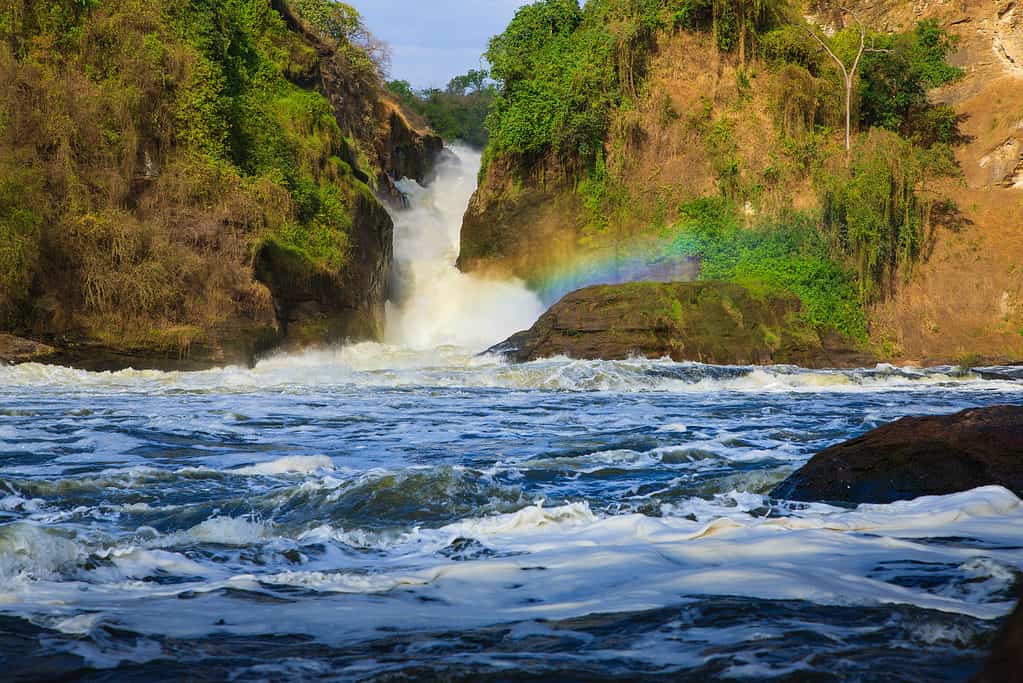
The White Nile begins in Uganda.
©Radek Borovka/Shutterstock.com
67. Venezuela
Venezuela is a large country on the Caribbean coast of South America. This country has enormous oil resources but struggles economically. In recent years large numbers of Venezuelans have fled to neighboring countries and the United States for a better life.
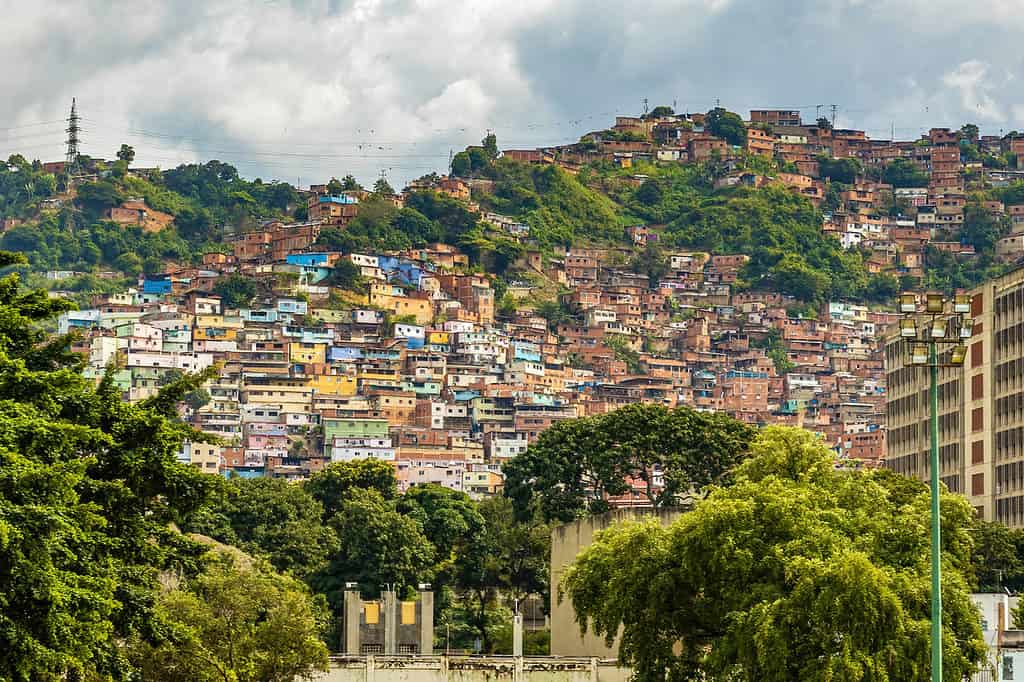
Urban residential buildings sit on a hill in Caracas, Venezuela’s capital.
©iStock.com/GummyBone
68. Zambia
The last country that ends in A on our list is Zambia. A landlocked country in southern Africa, Zambia is rich in iconic African wildlife. Tourists go there to spot elephants, lions, leopards, crocodiles, hyenas, hippos, and rhinos. But it is also home to rarer species like African wild dogs and lechwe antelope.
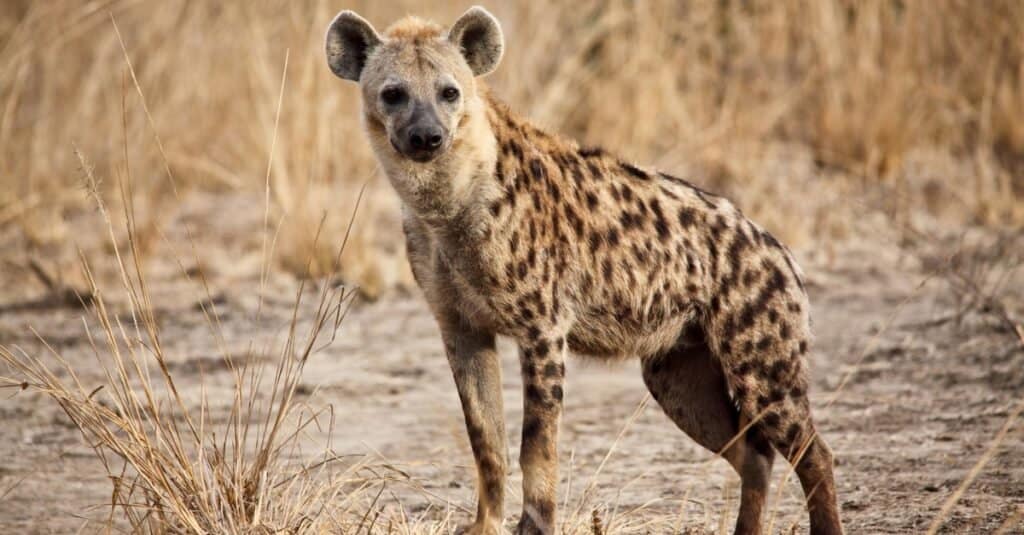
You can spot hyenas in Luangwa National Park, Zambia.
©gualtiero boffi/Shutterstock.com
The photo featured at the top of this post is © hamzahstudio/Shutterstock.com
Thank you for reading! Have some feedback for us? Contact the AZ Animals editorial team.







